
In the past decade dentistry has rapidly changed its mindset towards minimally invasive dentistry. Options available to patients, including bonding, short term orthodontics and no preparation veneers, have become the new way to provide patients with the perfect smile. In some cases, there is still a need to restore anterior teeth with good old-fashioned all porcelain restorations. In these cases, it is imperative the case is restored with an additive wax up to ensure maximum amount of tooth structure is preserved.
This patient presented with an un-aesthetic smile, his main complaint was that he hated the metal-ceramic crowns as they were monochromatic, and unsightly metal margins were visible due to his high lip line. This patient was not concerned about his ‘gummy’ smile or the fact that his gum levels were not perfectly symmetrical.
All of his options were discussed in detail and due to financial limitations we decided to use composite restorations to restore the lower anterior teeth that had been worn down due to attrition and a combination of composite veneers and porcelain crowns/veneers to restore the upper arch.
Clinical protocol
Following a full exam, the patient was presented with a number of options to restore his smile. These were all written up on a detailed consent letter, which outlined all the options, risks, benefits, costs, time span and chosen treatment plan.
Records were then taken including: full set of clinical photographs, stick bite in maximum intercuspal position, anterior guidance, left and right lateral excursion bite records (including a video to record these movements), Denar 2 facebow record and upper and lower silicone impressions. An additional video was also recorded of the patient speaking, this is essential to record the lip movements, incisal edge position in relationship to the lip and general phonetics (patient was asked to speak the number from 50-70 and 30-40).
All of this information was sent to the laboratory technician (via dropbox), which was then used to produce a diagnostic wax up.
From the diagnostic wax up, Mr JC had the opportunity to visualise the shape; size and general feel of the new restorations, through the placement of temporaries (Peumans M et al 1998; Chiche GJ, Pinault A, 1994; Romano R, Bichacho N, Touati B, 2005). These temporary restorations were only placed for a single appointment, but a full set of photographs was taken to show the patient the cosmetic appearance of the proposed smile (Dawson PE, 1989).
After spending two weeks bleaching with 10% CP using Polanight home whitening kit, Mr JC achieved his desired teeth shade (A1). To accurately record the final shade, the ceramist attended this appointment at the start (while the teeth were still hydrated) to take an accurate shade recording for the final porcelain veneers. Then composite veneers were placed on the UL3 and UR3 free hand using putty index’s fabricated from the diagnostic wax up:
- UL3, UR3 isolated using PTFE tape around adjacent teeth
- UL3, UR3 buccal surfaces cleaned and prepared with Co-Jet micro-abrasion
- 37% phosphoric acid applied for 40s, Optibond Solo applied and air-dried, light cured for 40s
- Venus Pearl B1 placed in a single layer over the buccal surface and insical edge of the UL3, UR3
- Light cured for 40s
- Light cured again through oxygen inhibiting gel (Deox) for 40s
- Polished using Soflex disks, rubber points, jiffy brushes and enamelise (diamond polishing paste) with a goat’s hairbrush.
The same procedure was done for the composite restorations on the lower LL3-LR3 to restore the incisal edges.
The Galip Gürel technique was used to ensure minimal preparation for the porcelain veneers and crowns:
- All the old restorations were removed with a fast hand piece.
- APT – aesthetic pre-evaluative temporaries (Gürel, 2003) were placed using silicone putty fabricated from the diagnostic wax-up
- 5mm and 0.7mm depth cut burs (Garber DA, Goldstein RE, Feinman RA, 1988; Nixon RL, 1990; Garber DA, 1993) were used to ensure the correct amount of required space was created for the porcelain veneers
- Incisally 2mm reduction through the APTs was prepared (Castelnuovo J et al, 2000)
- A pencil was used to mark out the depth cuts on the facial surface. Then a chamfer bur was used to remove the excess luxatemp until no pencil marks were visible
- All margins were smoothed with a fine Soflex polishing disc
- The ceramist then came in to record the stump shades
- Astringent retraction paste (3M) was used before taking impressions
- Two-stage putty-wash impression was recorded for the upper arch
- Lower arch alginate impressions and a stick bite recorded with blue mousse
- Temporaries fitted with A1 Luxatemp and tempbond clear
- Occlusion checked (bilateral canine guidance) and patient happy with appearance of ‘trial smile’.
After four days the patient attended a review appointment, he was very happy with his new smile.
Then one week later the laboratory technician fabricated the final porcelain veneers. The lithium disilicate (Emax) veneers and crowns were pressed to full anatomical contour and then incisal stains were applied. Once fitted using nexus clear dual cure cement, all margins were cleaned and excess cement removed. Occlusion was checked including maintaining bilateral canine guidance and checks for any NWS interferences.
Final outcome
The patient was very happy with his new smile and with the ease of the treatment.
He said: ‘I am so happy to finally have the perfect smile that I have always dreamed of.’
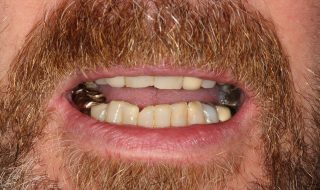
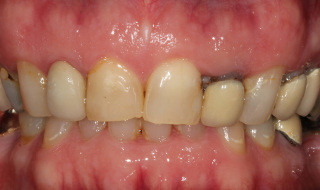
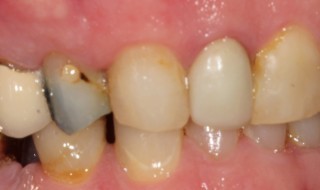
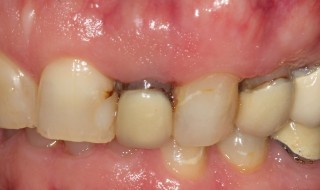
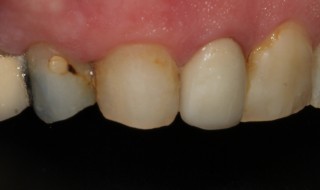
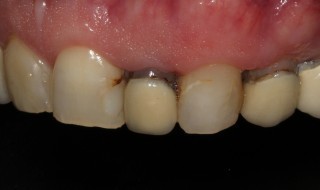
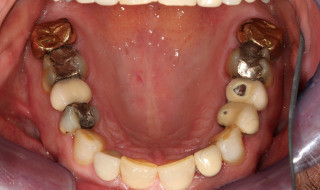
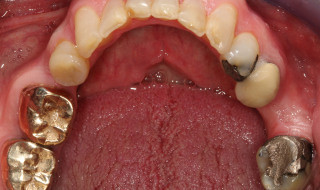
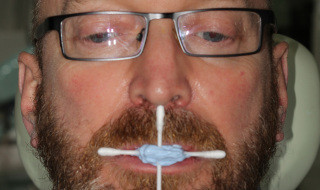
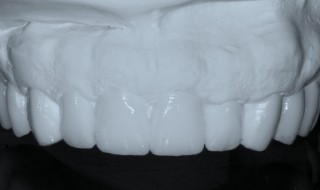
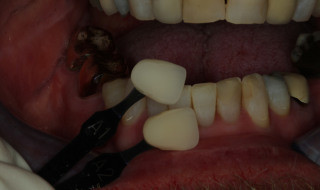
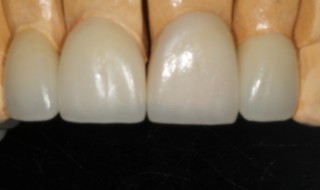
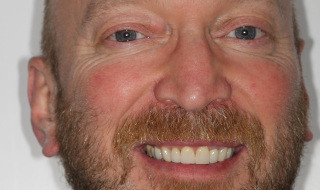
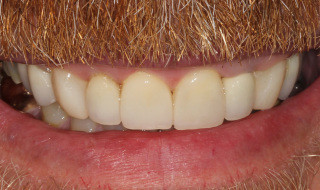
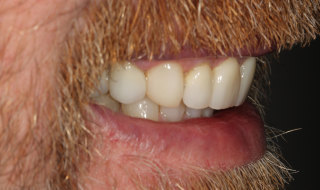
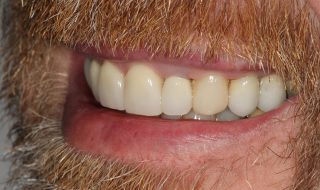
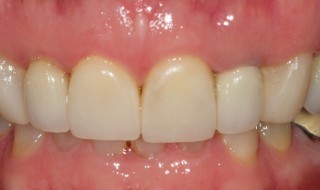
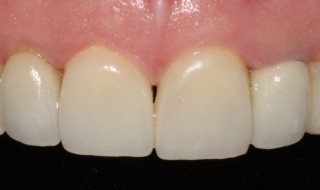
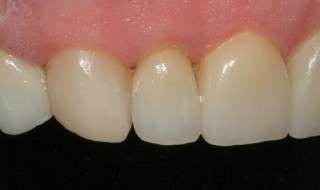
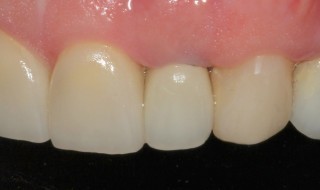
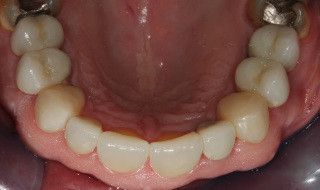
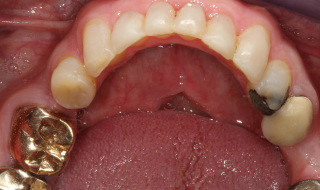
References
Castelnuovo J, Tjan AH, Phillips K, Nicholls JI, Kois JC (2000) Fracture load and mode of failure of ceramic veneers with different preparations. J Prosthet Dent 83: 171-180
Chiche GJ, Pinault A (1994) Esthetics of Anterior Fixed Prosthodontics. Chicago: Quintessence
Dawson PE (1989) Evaluation, Diagnosis and Treatment of Occlusal Problems (2nd edition). St Louis: Mosby
Gurel G (2003c) Predictable tooth preparation for porcelain laminate veneers in complicated cases. Quint Dent Tech 26: 99-111
Garber DA (1993) Porcelain laminate veneers: 10 years later. Part 1. Tooth preparation. J Esthet Dent 5: 56-62
Garber DA, Goldstein RE, Feinman RA (1998) Porcelain laminate veneers. Chicago: Quintessence
Nixon RL (1990) Porcelain veneers. An esthetic therapeutic alternative. In: Rufenacht CR. Fundamentals of Esthetics. Chicago: Quintessence, pp329-68
Peumans M, Van Meerbeek B, Lambrechts P, Vanherle G, Quirynen M (1998) The influence of direct composite additions for the correction of tooth form and/or position on periodontal health: A retrospective study. J Periodontal 69: 422-427
Romano R, Bichacho N, Touati B (eds) (2005) The Art of the Smile. Chicago: Quintessence
For more information please visit www.dentalcircle.com.


